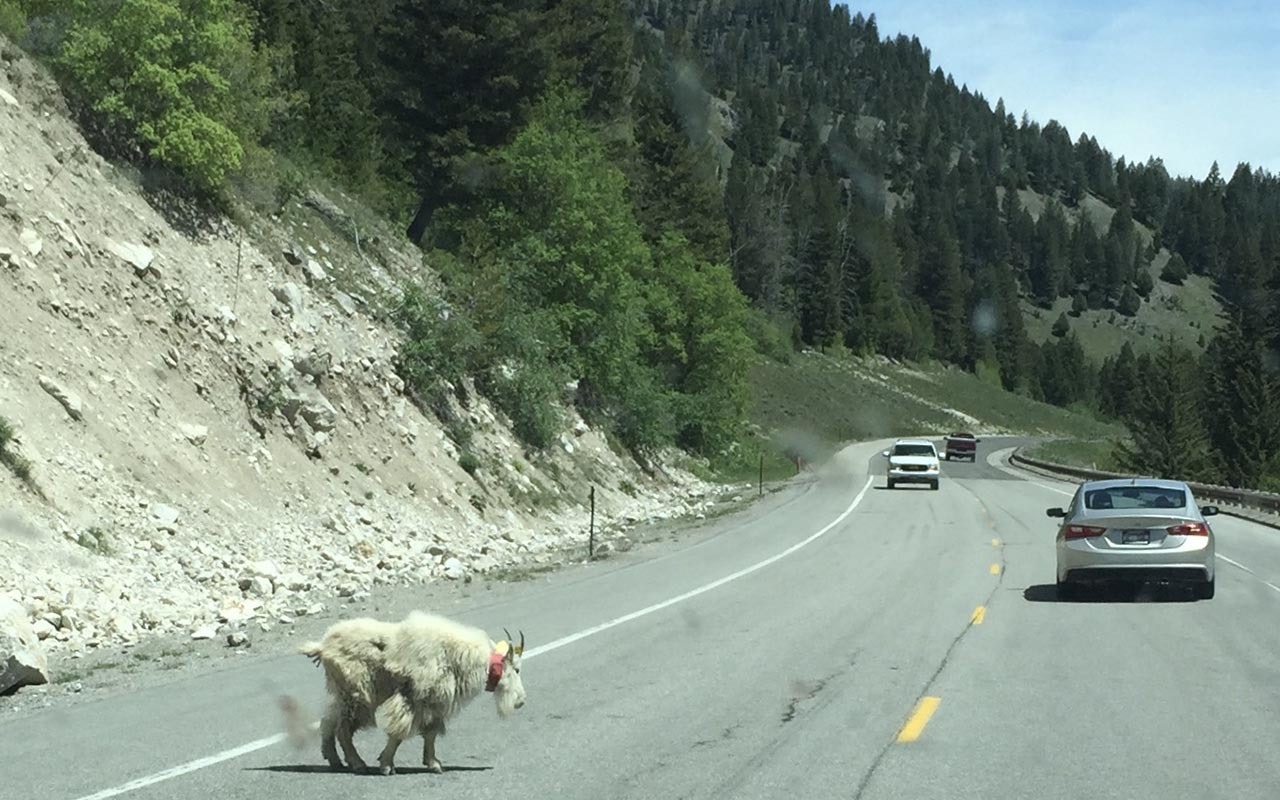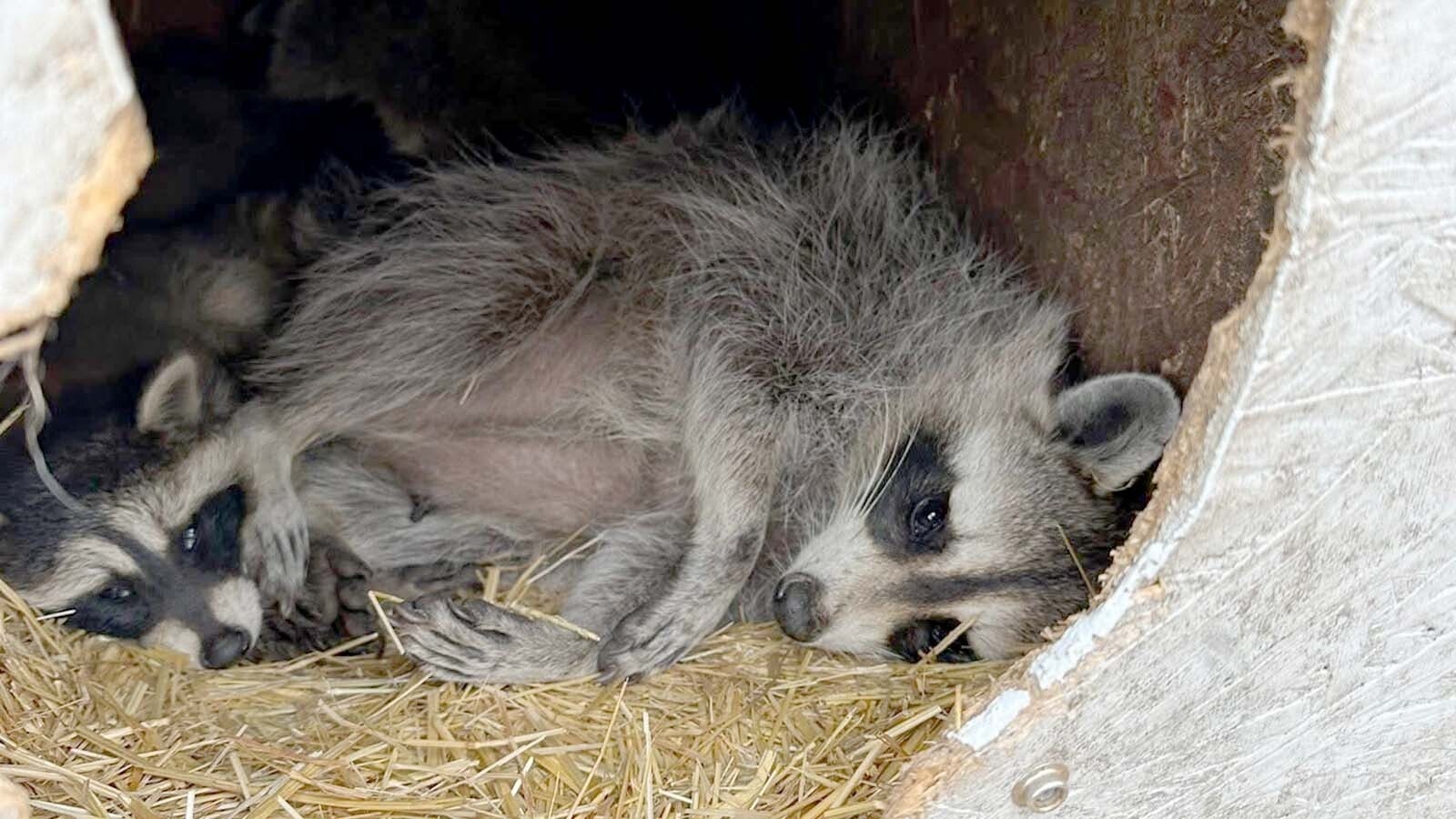Doug McWhirter wants people to understand several things about Wyoming’s iconic mountain goat populations.
They’re cool. And they don’t belong everywhere.
“Mountain goats are fascinating, cool, and there are places we want to manage for thriving mountain goat populations,” said McWhirter, the Wyoming Game and Fish Department’s wildlife management coordinator in the Jackson region. “We want thriving mountain goat populations in the Snake River, Palisades and Beartooths areas.”
“We want to manage for hunting and viewing opportunities in these areas. In other places, we want to favor the core-native bighorn sheep herds in our management,” McWhirter continued. “Bottom line, we don’t hate mountain goats.”
Wyoming game managers share a concern with the National Park Service concerning a relatively new, expanding, non-native mountain goat population in Grand Teton National Park.
The Teton Range is home to a small herd of native bighorn sheep, one of the smallest and most isolated populations in Wyoming.
The Teton Range bighorn sheep population is about 100 strong, while this new non-native mountain goat population has eclipsed 100 animals and is still growing.
The new mountain goat population is believed to have expanded from the Palisades area and into the Teton Range. The first documented reproduction of mountain goats in Grand Teton National Park was recorded in 2008.
Now there are concerns that the mountain goat population threatens the native Teton Range bighorn sheep herd through increased risk of disease transmission, which the Palisades goats are documented to harbor, and the potential for competition for limited resources.
“The Teton Range herd of native bighorn sheep is of high conservation value to the park, adjacent land and wildlife managers, and visitors,” said Denise Germann, Grand Teton National Park public affairs officer. “Our intent is to remove the non-native population of mountain goats and to maintain and improve viability of the native Teton bighorn sheep herd.”
The Game and Fish Department, assisted by hunters, is doing its part to manage the park’s mountain goat population in 2019. Liberalized hunting seasons were implemented outside of the park, in the Caribou-Targhee National Forest’s Jedediah Smith Wilderness.
“We’re doing what we can to address the situation in goat hunt area 4,” McWhirter said.
In the hunt area, the once-in-a-lifetime draw for mountain goat licenses was set aside. Instead, to help manage the mountain goat population, the department set a quota of 48 licenses for the 2019 season.
McWhirter checked a harvested mountain goat last week from area 4, and it marked the 21st harvested goat of the season.
“Without exception, the hunters I have encountered have been very supportive,” McWhirter said. “They have appreciated the opportunity to harvest a mountain goat, and to try to conserve bighorn sheep populations in the Tetons.”
The Teton bighorn sheep herd, “during the times we’ve been monitoring numbers, has never been huge. There’s about 100 to 125 sheep there,” McWhirter said. “They don’t migrate. They live at high populations all year, and they are subject to harsh conditions. These new non-native mountain goats are bringing additional mouths to the landscape, and we believe this peer competition could adversely affect the sheep.
“The bighorn sheep are doing OK in the Tetons,” McWhirter continued. “They’ve always been living on the edge, and besides the non-native goats, there are issues, too, with expanding backcountry winter skiing. The pressures on those sheep are making it tougher for their survival.”
Details aren’t certain yet, but Grand Teton National Park is considering removing the non-native mountain goats from within its boundaries — specifically, between Cascade and Snowshoe canyons — by lethal and non-lethal methods this winter.
“Without swift and active management, the mountain goat population is expected to continue to grow and expand its distribution within the park,” Germann said. “The mountain goat population is at a size where complete removal is achievable in a short time, however, the growth rate of this population suggests that complete removal in the near future may become unattainable after a period of about three years.”
Mountain goat hunting inside the park itself, or what the National Park Service refers to as the “use of skilled volunteers,” is the newest idea for mountain goat removal in the Tetons.
“Qualified volunteers is a tool that may be used, but we have not developed this program,” Germann said.
Where Grand Teton National Park currently authorizes hunting, park officials refer to the practice as a “reduction program.”
Rules are generally more restrictive for hunters in Grand Teton National Park, but the hunting is done by hunters licensed by the state Game and Fish Department.
The concept of using “skilled volunteers,” or hunters, is new since the national park issued an environmental assessment on the issue last December. Plans then called for National Park Service staff or contractors to kill goats from the ground with rifles, and from helicopters with shotguns. These early plans called for leaving the carcasses where the animals fell.
In March, the John D. Dingell Jr. Conservation, Management and Recreation Act passed Congress. Part of the bill addressed wildlife management in national parks.
The legislation, sponsored by Sen. Lisa Murkowski, R-Alaska, stated, “if the (Interior) Secretary determines it is necessary to reduce the size of a wildlife population … the Secretary may use qualified volunteers to assist in carrying out wildlife management on [park] system land.”
Grand Teton National Park officials cited the Dingell act in their “finding of no significant impact” decision, which was signed by Acting Park Service Regional Director Palmer Jenkins in September.”
The desire is to quickly and efficiently remove non-native mountain goats from the park,” Germann said.
“Our big things, in our comments, are that we would like to see all efforts exhausted before ‘agency lethal removal’ is the answer,” McWhirter said. “We really appreciate the Park Service addressing our concerns, and allowing skilled volunteers to participate and help with the conservation of these goats. It’s all about trying to make a bad situation more tolerable.”





